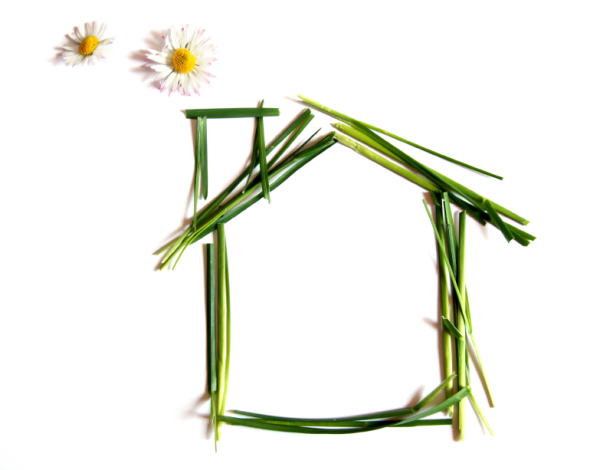There are degrees of green improvements you can make to your home. You don’t have to create a living wall or allow plants to take over your home exterior to make your house a bit more green. One of the ways you can go green without compromising the look of your home is to get the right siding.
Fiber-Cement
There are a number of reasons why fiber-cement siding is considered a green alternative to vinyl siding. The siding product we work with is from the JamesHardie brand and it is warrantied for 30 years. This is comparable to the warranty on vinyl siding. In the end, the longer warranty means about 6 times less waste from siding products filling our landfills every year.
Fiber-cement is made of four basic, organic properties. That is: wood pulp, fly ash, Portland cement, and water. There are some variations, but the materials that make up fiber cement siding are mainly green materials.
You don’t need special cleaning products for fiber-cement siding. Just spray it thoroughly with your garden hose every six months or so and keep foundation plants pruned back from the side of your home to allow your siding to stay dry and relatively dirt-free. This means no cleaning fluids get added into the drains and water of San Mateo when you clean your home exterior.


Wood
The traditional siding is made of wood have gives your home a clapboard look. Fiber-cement can duplicate this look, but some people want to stick with old standbys.
The type of wood siding most commonly looked for is cedar siding. This is because it is more durable than many other wood siding types. While cedar can last up to 50 years, it does need more maintenance than synthetic siding types and generally has to be refinished every two years or so. Additionally, the type of wood that works best for siding purposes is often from old-growth forests. This means it is a limited resource.
A benefit of wood siding is that it can be recycled and it degrades well in landfills. It’s just unfortunate that it is such a limited resource.
Brick/Stone
Brick or stone siding is incredibly durable and can make a home look really lovely. These siding types are natural insulators and can last for a very long time. Try to go for locally quarried stone or locally produced brick to reduce your carbon footprint further.
While you may not want your entire home wrapped in brick or stone, it can make a really beautiful accent and create some great contrast that contributes to the overall look.
The main drawback to using stone is that it is a non-renewable resource. It can also be expensive to find a masonry professional for the installation. There are siding types that can imitate brick or stone without the cost.

Most siding types help increase the sustainability and reduce the carbon footprint of a home. Siding creates an excellent thermal layer than can help reduce heating and cooling bills – and therefore make your home that much more “off the grid.”
However, some siding types are more eco friendly than others. Contact us today and we can help you find the right type of siding for your home.
